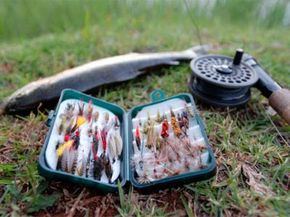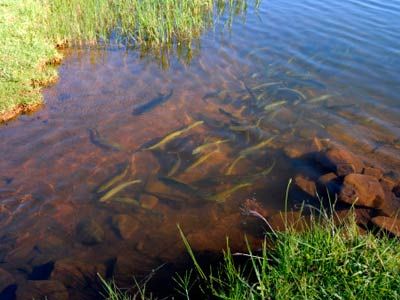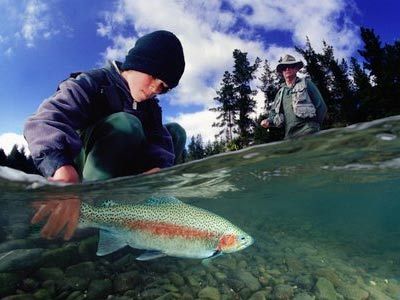At your wedding, your father-in-law pulled you aside and asked you to arrange a trout fishing trip for the two of you. The problem is that the last time you went fishing, you were eleven years old and attempting to catch tadpoles in the nearby creek. Needless to say, you're going to need to learn a lot of information to reel in an impressive catch. The type of lure or bait you use will be an important factor in determining how many bites you get. Don't worry -- by the end of this article, you'll sound less like a novice and more like a true angler. You'll be able to use the lingo that goes along with lures and live bait.
So you don't even know the difference between a lure and live bait? A lure is an artificial imitation of a fish's prey, often made of metal hooks or plastic. Live bait is the fish's natural prey attached to a hook on the end of the fishing line. Common live baits include worms, insects, small fish and fish eggs.
Advertisement
Before you pick out the kind of lure and/or live bait that makes sense for your trip, you need to get started with a fishing rod and spinning reel. While you're at the sporting goods store, be sure to inquire about state rules, regulations and licenses to avoid catching fines instead of fish.
Depending on where you're fishing, your lures and bait will catch different kinds of trout, including rainbow trout, brook trout, brown trout and lake trout.
Read on to discover more about how lures work to attract trout.
Advertisement



